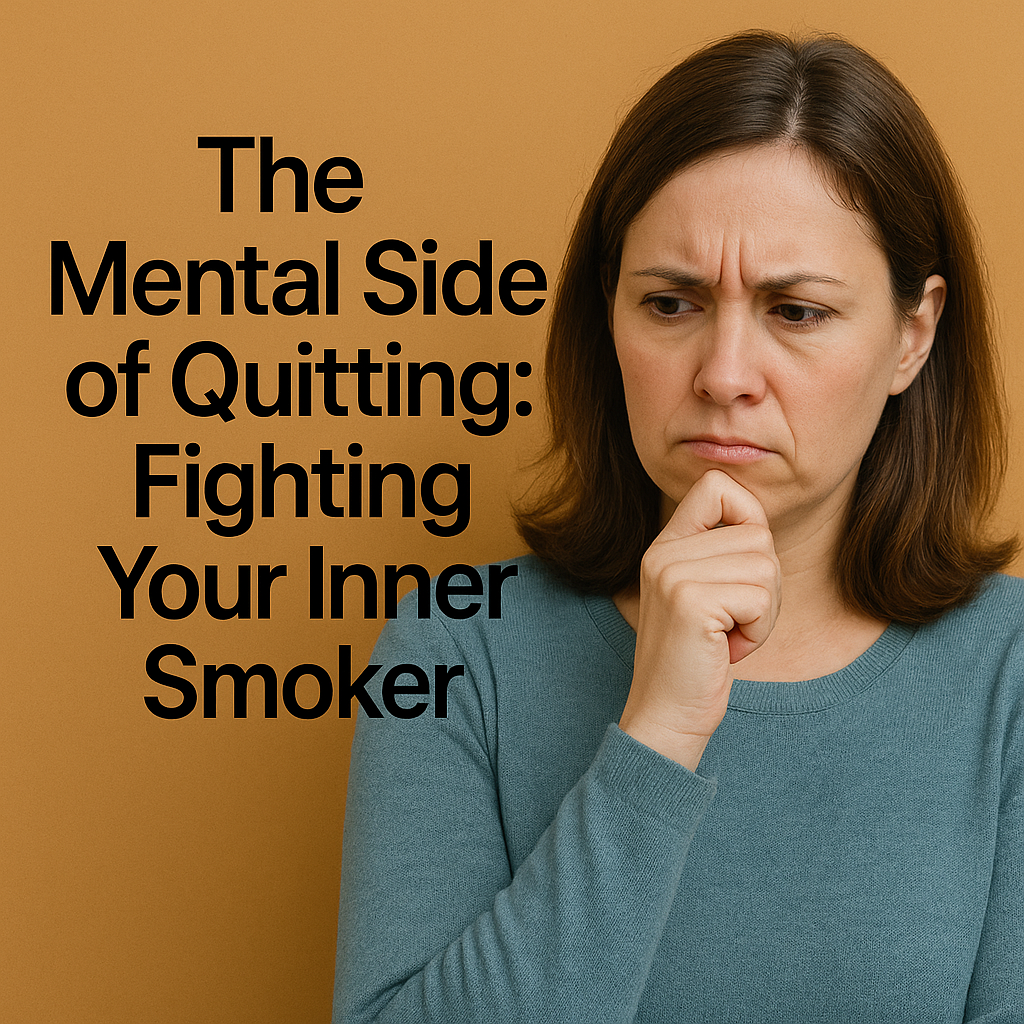Quitting smoking isn’t just about nicotine — it’s a battle inside your mind. The hardest part isn’t throwing away your cigarettes, it’s silencing that voice that says, “Just one won’t hurt.” That voice — your inner smoker — has been part of your identity for years. Learning how to recognize it, challenge it, and eventually quiet it is what separates temporary quitters from those who stay smoke-free for life.
1. Meet Your Inner Smoker
Your “inner smoker” is that whisper of resistance — the voice that rationalizes bad choices. It’s not evil; it’s habit. It’s your brain trying to protect comfort and routine. Every time you crave a cigarette, it’s that part of you saying, “This is how we relax,” or “You’ve earned it.”
Understanding it is step one. You can’t fight what you don’t recognize. When the thought appears, don’t panic — label it. “That’s my inner smoker talking.” The more you call it out, the weaker it gets.
2. Separate Cravings from Commands
Cravings are sensations, not orders. Your body might feel a pull, but it doesn’t mean you have to obey. When a craving hits, your inner smoker will frame it as urgent — like you’ll lose control if you don’t give in. But cravings are waves: they rise, peak, and fade, usually within minutes.
Try this mental reframe: Instead of saying “I need a cigarette,” say “I’m experiencing a craving.” It shifts power back to you.
3. Reprogram the “Reward System”
For years, your brain linked smoking with reward — a dopamine hit, a brief moment of calm. When you quit, that system panics because it’s missing its shortcut to relief. The key isn’t just removing smoking — it’s replacing the reward.
- Take a short walk instead of lighting up.
- Listen to music or chew gum when you feel tension build.
- Celebrate small wins — each craving resisted is proof of progress.
Each time you resist, your brain rewires a little more toward real, sustainable calm instead of chemical calm.
4. Expect the Voice — and Talk Back
Your inner smoker won’t disappear quietly. It’ll argue. “You’ve had a bad day,” “You deserve a break,” or “You can quit again later.” Don’t fight it with guilt — fight it with awareness.
Respond with logic and confidence:
- “I don’t need nicotine to relax.”
- “I’ve worked too hard to go back.”
- “This craving will pass — it always does.”
Every time you talk back, you teach your brain who’s in charge now.
5. Identify Emotional Triggers
Smoking is emotional. It’s how many people cope with stress, boredom, loneliness, or even celebration. When those emotions return, your inner smoker will try to convince you that smoking will fix them. It won’t — it’ll just pause them for five minutes.
Try this: When you feel an urge, ask yourself, “What am I really craving?” Maybe it’s a break, comfort, distraction, or connection. Once you name it, you can find a real solution — one that doesn’t involve smoke.
6. Use Visualization to Stay Grounded
Visualization is powerful. Picture two versions of yourself — one who gives in and one who doesn’t. See the difference: your health, your mood, your freedom. The more vividly you imagine your smoke-free self, the stronger your motivation becomes.
It’s not fantasy — it’s training your brain to prefer the version of you who’s free.
7. Forgive Yourself Quickly
Slip-ups happen. The inner smoker loves to turn one mistake into a relapse by saying, “You failed — might as well smoke the rest.” Don’t fall for it. One cigarette doesn’t erase your progress; it’s just data. Learn from it, reset, and move forward. Quitting isn’t about perfection — it’s about persistence.
8. Redefine “Stress Relief”
Smoking doesn’t actually reduce stress — it just satisfies the craving for nicotine, which caused the stress in the first place. Once nicotine is out of your system, real relaxation becomes easier to achieve. Try:
- Breathing exercises or stretching.
- Drinking cold water slowly.
- Taking short, mindful breaks throughout the day.
Train your brain to see calm as something you create — not something you inhale.
9. Create an “Anti-Smoker Playlist”
Music can rewire emotions faster than logic. Build a playlist that lifts your mood, reminds you of your strength, or connects you to your goals. Listen to it when cravings hit — or when your inner smoker tries to talk. Each song becomes a mental shield.
10. Remember: You’re Not Losing a Friend — You’re Losing a Liar
Nicotine feels like an old friend — always there when you need it. But that “friend” stole your breath, your focus, your money, and your control. Once you realize that, quitting stops feeling like deprivation and starts feeling like freedom.
Final Thoughts
The mental side of quitting is the true battleground — it’s where relapse starts, but also where freedom begins. Recognize your inner smoker, challenge its lies, and replace its voice with your own. Every day you resist, you’re not just staying smoke-free — you’re rebuilding your identity as someone stronger, calmer, and finally in control.
Your mind created the habit — and your mind can break it.







Please log in to leave a comment.